You can have peaceful or lively moments depending on your mood!
Villa Caelum is located near the picturesque village of Skouloufia, close to the vibrant town of Rethymno. This area offers excellent hiking and cycling opportunities, allowing you to explore the authentic Cretan countryside while enjoying stunning views of the impressive Psiloritis mountain range.
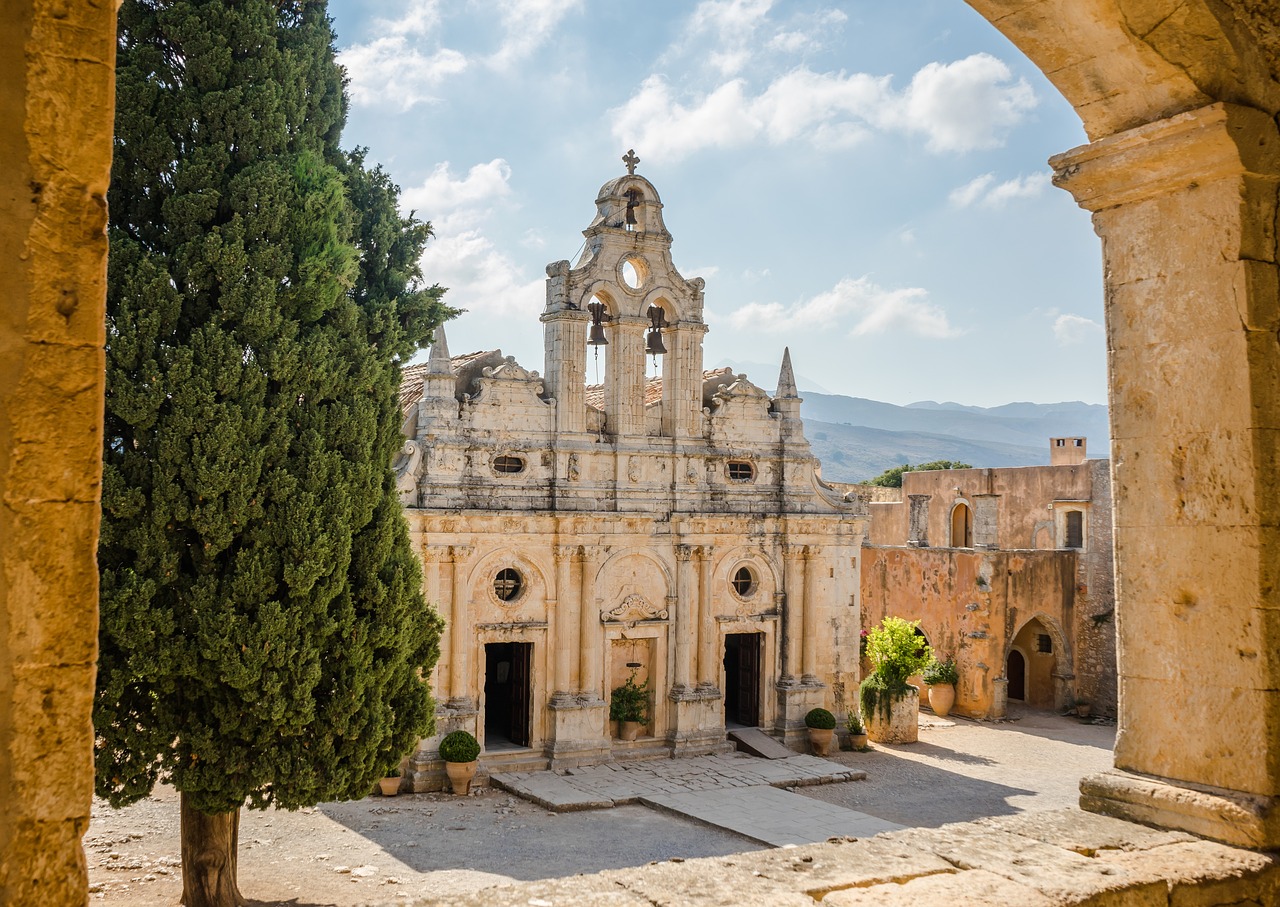
Sacred Monastery of Arkadi
The Monastery of Arkadi is a place of special historical interest, known for the events that took place there during the Revolt of 1866. The monastery is built on the edge of a high plateau, near the Arkadi Gorge. It is one of the most important monuments of Crete and a great pole of attraction for visitors.
Located 23 km southeast of Rethymno Town and 500 m above sea level, the initial fortified part of the monastery was built in the 12th century, presumably by a monk named Arkadios. According to another version, the monastery has been named after the Byzantine emperor Arcadius. The most important part of the Monastery is a church dedicated to the Saints Constantine and Helen, as well as to the Transfiguration of Jesus.
The ultimate contribution of the Monastery is its action of self-sacrifice, heroism and God-pleasant altruism: the Holocaust of November 8th 1866. This way the Monastery manifested its active presence in the fight against enslavement. It managed to throw off the yoke of slavery that the enemies raged to impose and succeeded in changing the course of Crete’s history.
Ever since, the Monastery has been carrying the weight of its history and taking part in the struggles that followed, in all aspects of life, on our long-suffering island in an effort to live up to its glorious past in any possible way.
Margarites Village
Margarites (Greek: Mαργαρίτες) is a small traditional village located in the prefecture of Rethymno. The village is known for its unique pottery tradition, its picturesque alleys, and its well-preserved architecture. Margarites is a perfect destination for those seeking an authentic Cretan experience and a glimpse into the island’s rich history and culture.
Margarites is renowned for its pottery tradition, which dates back to the Minoan period. The village’s unique clay soil and the local potters’ skills have made Margarites pottery one of the most famous in Crete. Visitors can visit the local workshops and witness the potters at work, using traditional techniques to create exquisite pieces of art. The pottery shops in Margarites offer a vast array of products, including vases, bowls, jars, and other decorative items, which are perfect souvenirs to take home.
Margarites is a unique destination in Crete, offering a combination of history, culture, and natural beauty. The village’s pottery tradition, architecture, local cuisine, and festivals create a unique atmosphere that attracts visitors from all over the world!
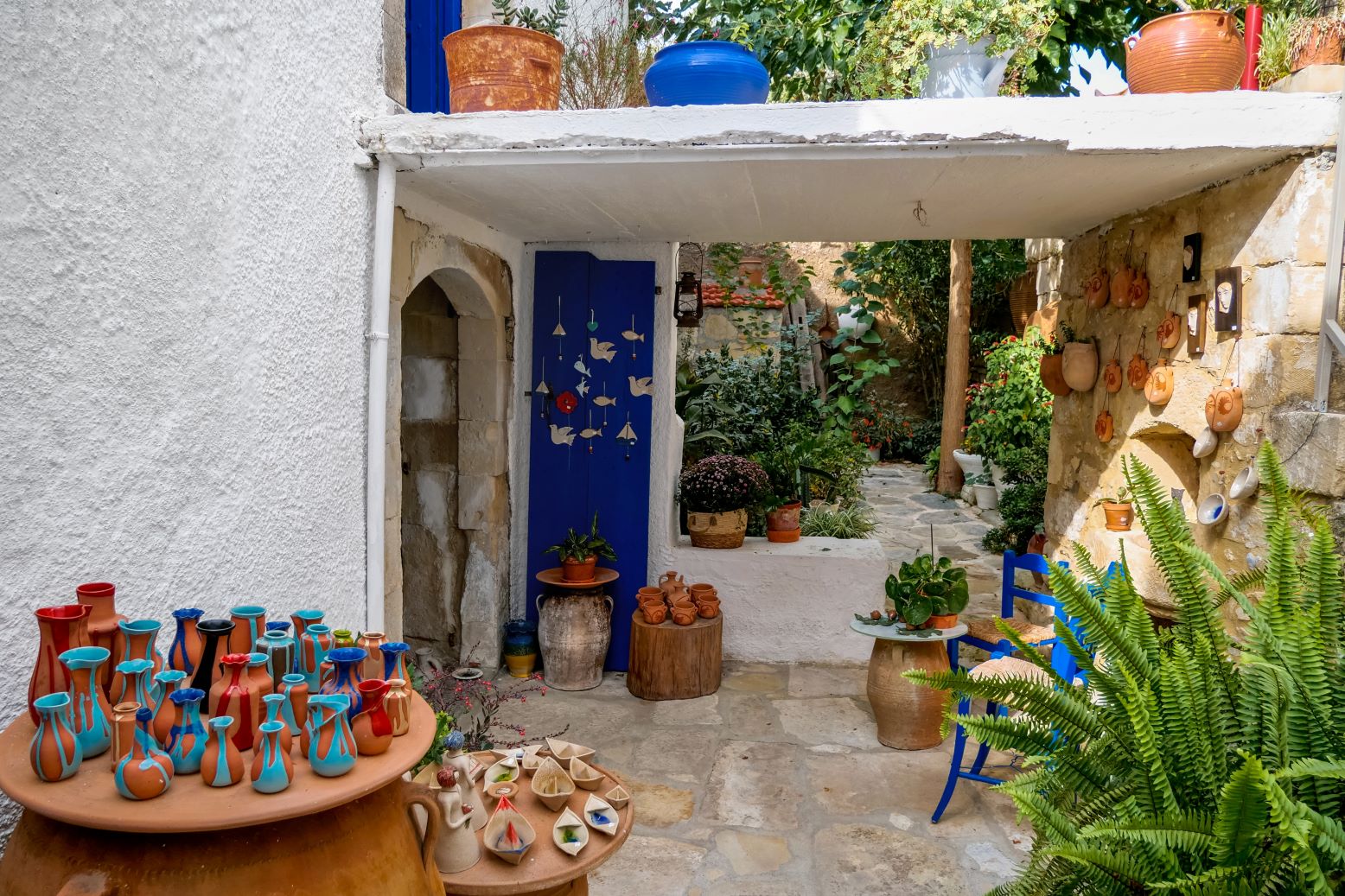
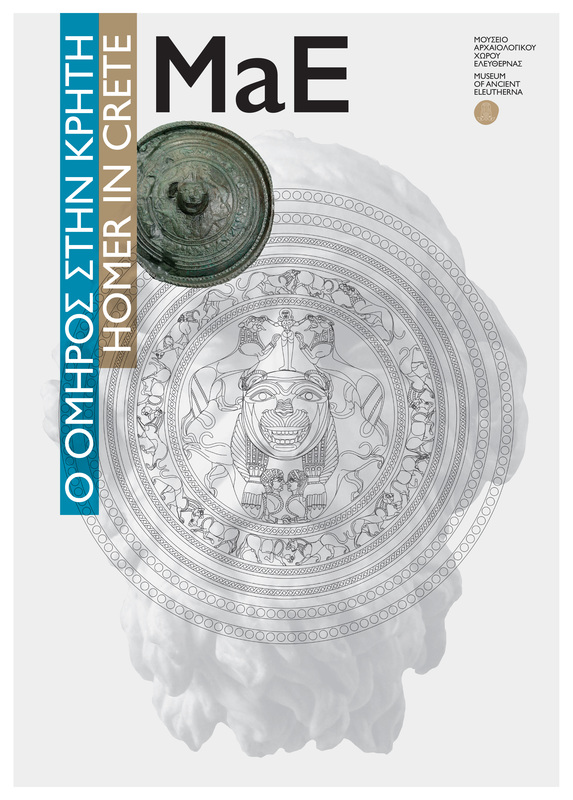
The Museum of ancient Eleutherna – Homer
The Museum of ancient Eleutherna – Homer in Crete, the first archaeological site museum in Crete, although smaller in size, is similar to those of Olympia, Delphi, and Vergina. The museum was created to house the results of the excavations carried out for thirty years in the ancient city of Eleutherna.
The originality of this museum is that the objects of the permanent exhibition will be updated periodically with new and older finds, so that the public’s interest is continuous and relates to the discoveries and expansion of the excavation work on the site.
The exhibition will be accompanied by original and modern audiovisual exhibits.
The project entitled “Building Complex of Eleftherna archaeological site museum – Travelogue” was implemented under the Operational Programme “Competitiveness and Entrepreneurship 2007-2013” (NSRF) of the University of Crete and the Ministry of Culture and Sport, who are the actors operation. In the southern wing of the building housed the Study Centre with its offices.
The effort was supported by private initiatives (Aristindin members of the Mediterranean Archaeological Society/ MAE), Organizations, Institutions, and individuals).
Panormos Village and Beaches
Panormo is a picturesque seaside village in Rethymno prefecture, located about 20 km east of Rethymno Town. It boasts two lovely, large beaches and several smaller ones.
The first one is called Limanaki and is a sandy shore with crystalline, shallow waters, ideal for children. On the coast, you will find all the essential amenities, including umbrellas, sunbeds, showers, plenty of restaurants and accommodation options.
The second one of the main beaches is called Limni and is also sandy with dazzling azure waters. It is organized with umbrellas and sunbeds and surrounded by an enchanting, craggy landscape. On its eastern side, separated by a stone pier, you will find a small pebbly shore with a rocky seabed, ideal for snorkeling.
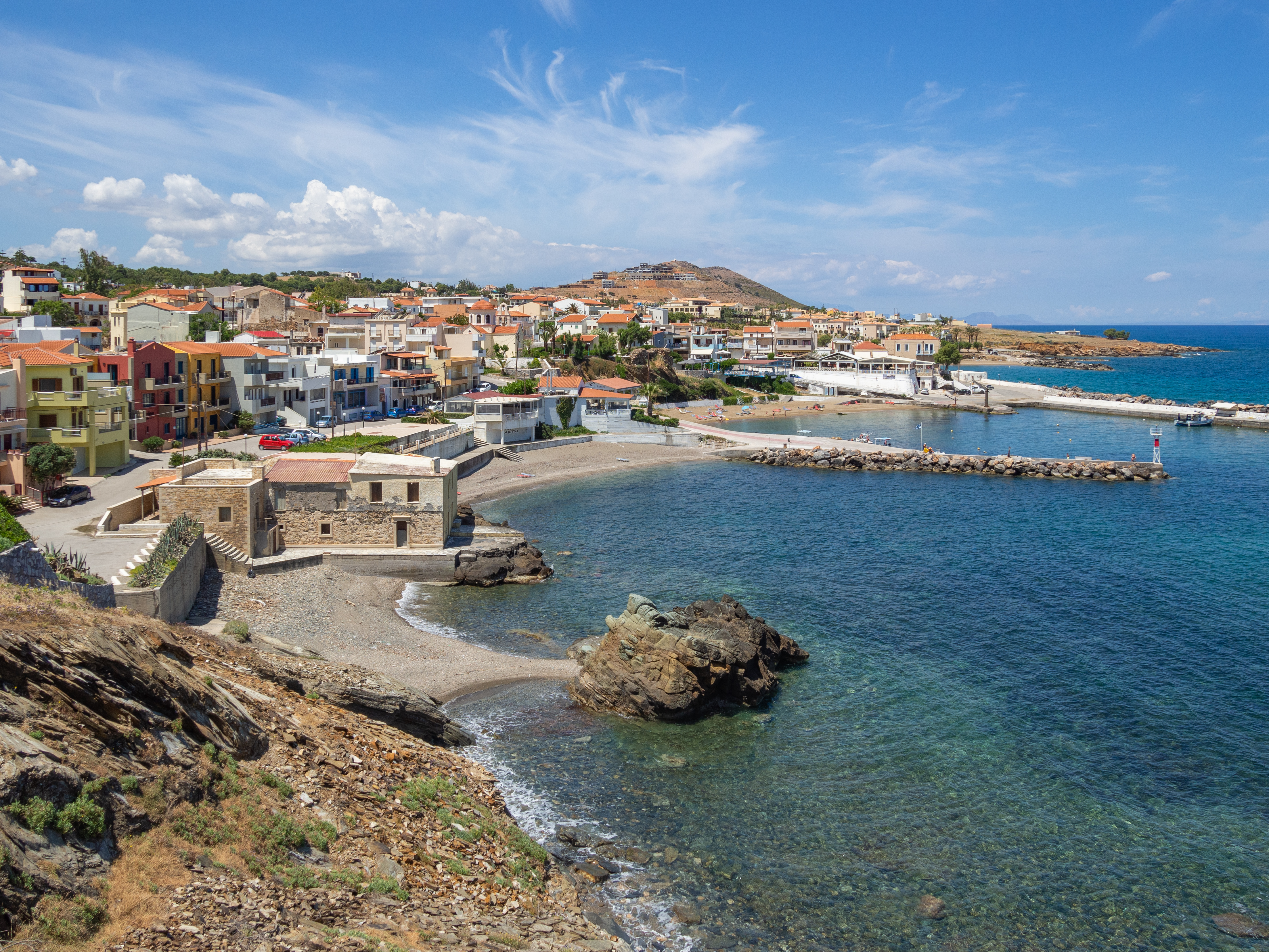
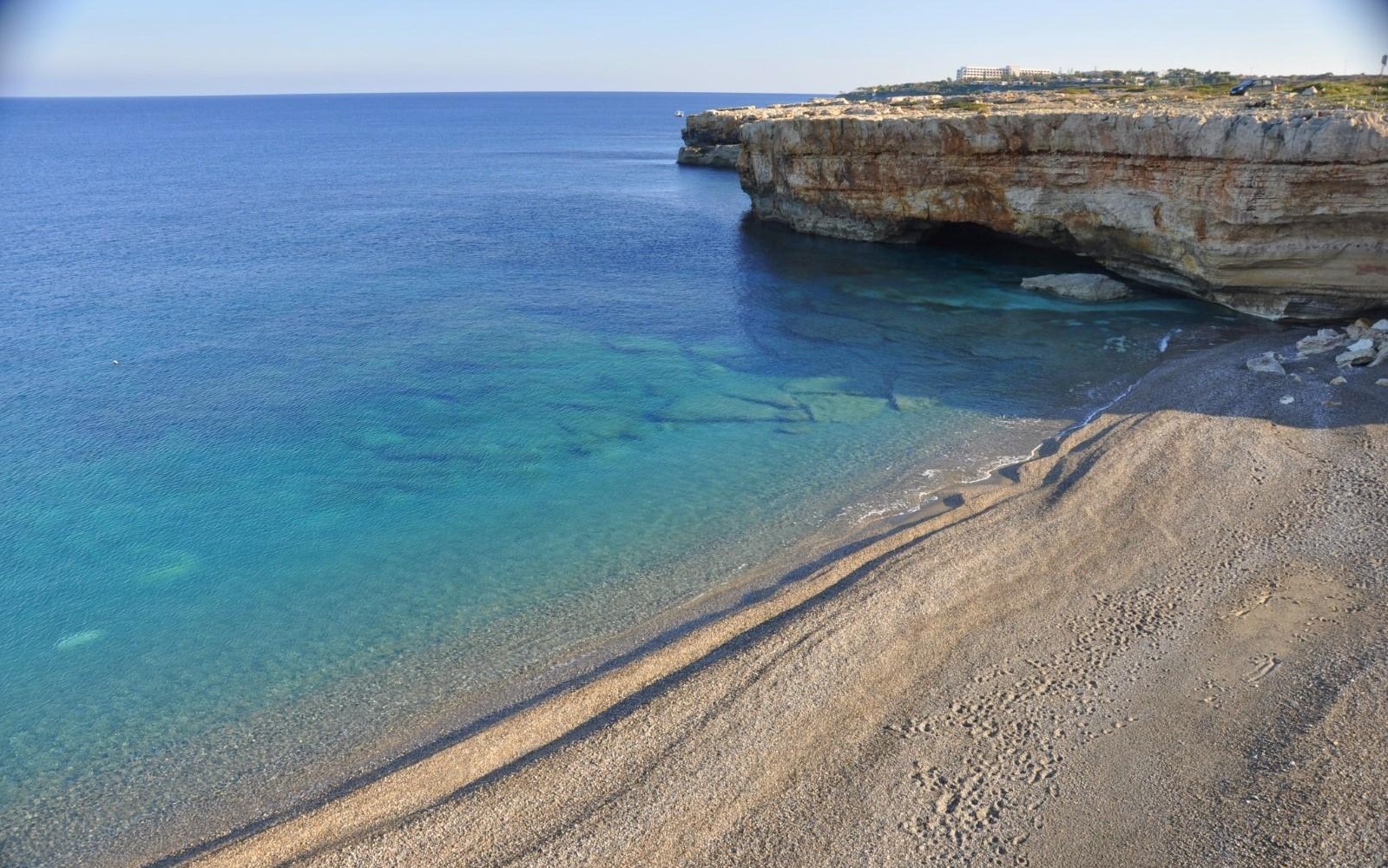
Spilies Beach
Kitrenosis Beach, also known as Spilies, lies 15 km east of Rethymno, nestled in the tranquil and secluded area of Latzima. Just a few kilometers past Skaleta and before Geropotamos, within the Prinos community of Mylopotamos. The beach is set in a charming small bay, adorned with smooth pebbles and boasting crystal-clear, deep waters, all sheltered by towering, vertical cliffs.
One of the beach's most striking features is the presence of large caves carved into the cliffs. To the left and on the western side, you'll discover numerous caves with uniquely sculpted rock formations, adding to the beach’s wild beauty. These caves also serve as a sanctuary for the endangered Mediterranean monk seal, offering a rare glimpse of nature's wonders. Though still off the beaten path, Kitrenosis Beach offers basic amenities, including umbrellas and a small canteen for visitors. The only challenge you might face is the strong northern winds, which can create sizable waves, but they only add to the rugged charm of this hidden coastal treasure.
Preveli Palm Beach
Preveli Palm Beach, located at the mouth of the Kourtaliotikos Gorge in southern Crete, approximately 43 km from Rethymno and 10 km east of Plakias, is a stunning, unspoiled gem. This beautiful beach is uniquely positioned where the Grand River flows through a lush grove of Theophrastus palm trees, creating a tropical atmosphere that captivates visitors. The river forms a freshwater lagoon that merges with the sea, offering a perfect blend of cool river water and warmer seawater, making it an ideal spot for swimming and relaxation.
The beach itself features a mix of soft sand and smooth pebbles, providing a tranquil setting for sunbathing and enjoying the natural beauty. A striking heart-shaped rock sits at the eastern end of the beach, adding to its charm. The surrounding area is rich in biodiversity, with numerous bird species nesting among the palm trees, making it a great spot for birdwatching.
Accessible via a short hike down steep steps, Preveli Palm Beach is part of a protected area, so there are no umbrellas or sunbeds, allowing visitors to immerse themselves in its unspoiled beauty. It’s advisable to pack essentials like a towel, sunscreen, and snacks, as facilities are limited. For those looking for adventure, canoeing along the river provides a unique perspective of the lush landscape, while hiking to the nearby Preveli Monastery offers stunning panoramic views of the coastline and the gorge.
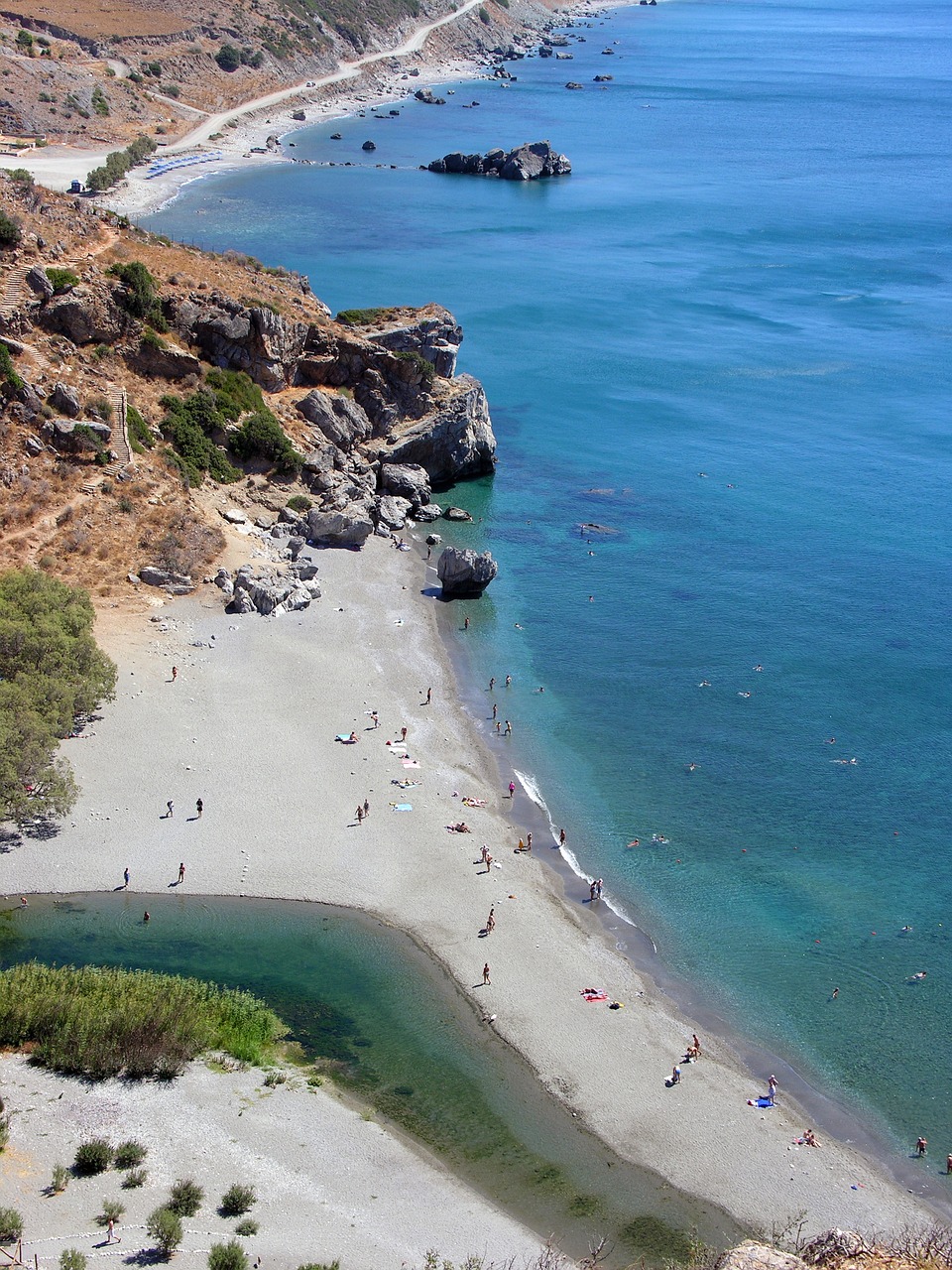
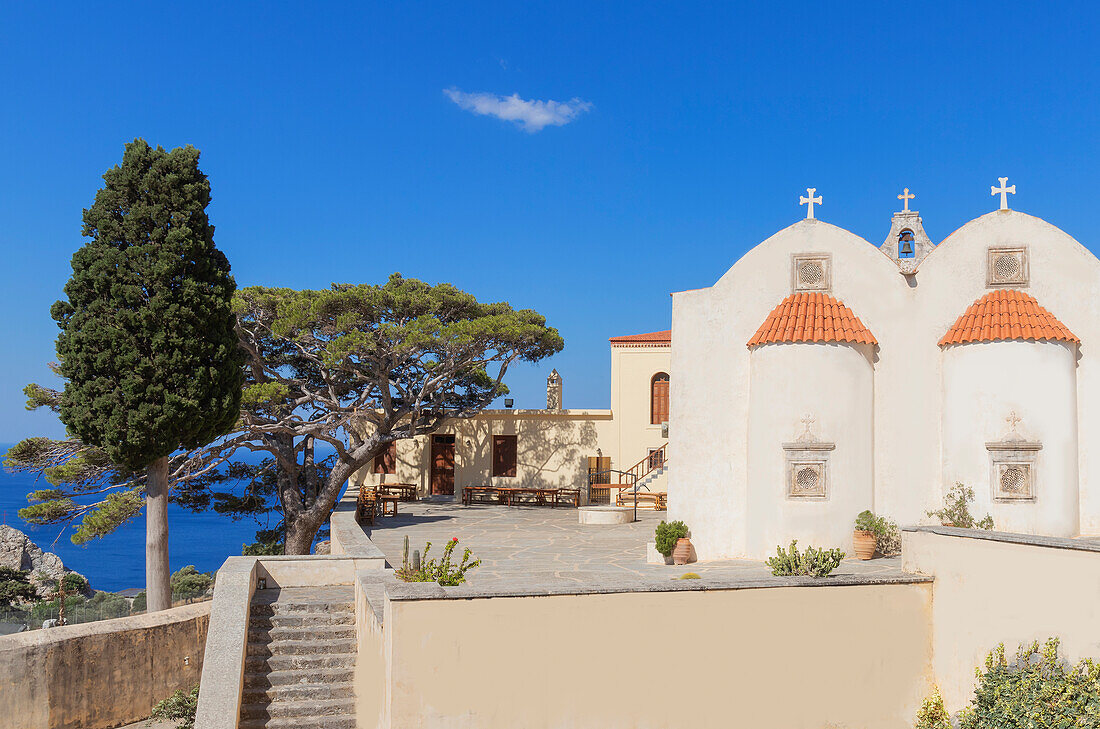
Preveli Monastery
Preveli Monastery, located near Preveli Palm Beach in southern Crete, consists of two distinct complexes: the Kato Monastery (Lower Monastery) and the Pano Monastery (Upper Monastery). The Kato Monastery, established in the 18th century, is situated closer to the river and the coast, while the Pano Monastery, built later, is perched on a hilltop, offering stunning panoramic views of the Kourtaliotikos Gorge and the Libyan Sea.
The Pano Monastery is known for its impressive architecture, including the Church of the Transfiguration, adorned with beautiful frescoes and religious artifacts. It has a rich history, particularly during World War II, when it served as a refuge for resistance fighters and Allied soldiers.
The Kato Monastery, although less visited, is equally significant. It features traditional Cretan architecture and is surrounded by lush gardens, providing a peaceful atmosphere.
Visitors can hike between the two monasteries, enjoying the serene landscape filled with olive groves and cypress trees. Both monasteries host various religious festivals throughout the year, attracting locals and tourists alike. Together, they offer a unique glimpse into the spiritual and cultural heritage of Crete, making them a must-visit for anyone exploring the area.
Kourtaliotis Gorge
Kourtaliotis Gorge, located 22 km from Rethymno in Crete, is a natural marvel carved by the Kourtaliotis River. This gorge spans 3 kilometers, with cliffs rising up to 600 meters, creating a dramatic landscape of deep ravines and narrow passages. It is a popular destination for hikers and nature lovers, offering scenic trails with panoramic views of the surrounding mountains and valleys.
The gorge’s main attraction is the stunning Kourtaliotis Waterfall, plunging 40 meters into a clear pool, fed by underground springs. The area is also home to diverse wildlife, including rare birds of prey like griffon vultures, making it a haven for bird watchers. Steeped in history, the gorge has been a natural fortress since ancient Minoan times and features in local myths and legends.
Whether you’re hiking, photographing the breathtaking scenery, or simply soaking in the tranquil atmosphere, Kourtaliotis Gorge is a must-visit for anyone exploring the rugged beauty of Crete. It’s often combined with trips to nearby Preveli Palm Beach and other local attractions.
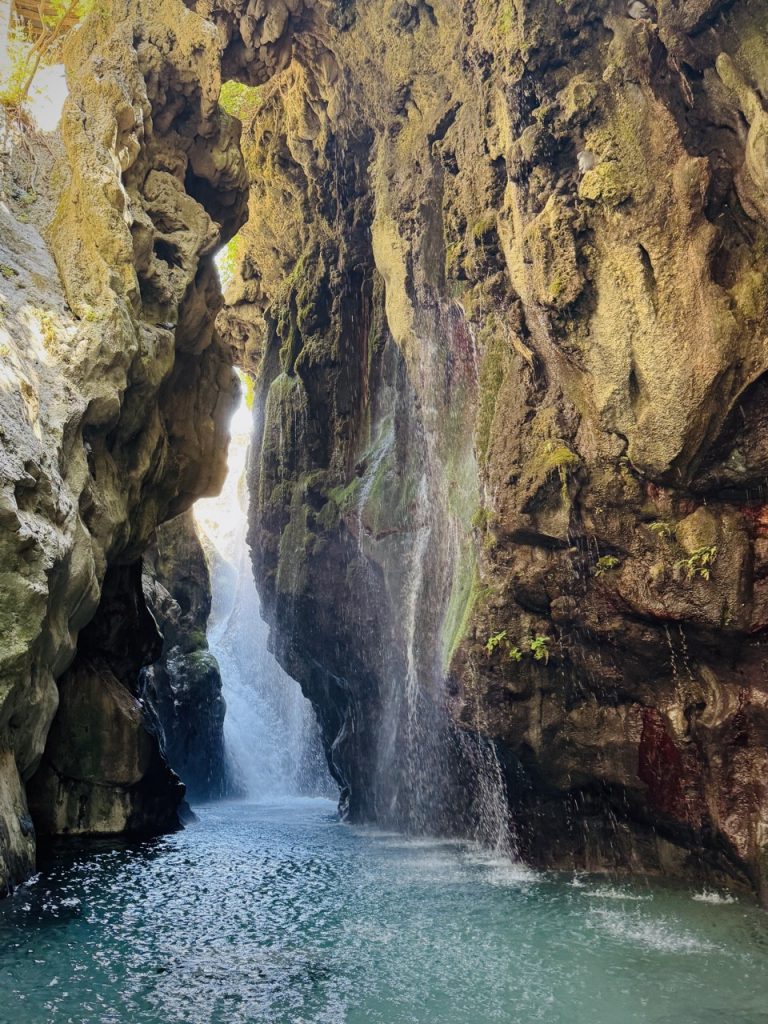
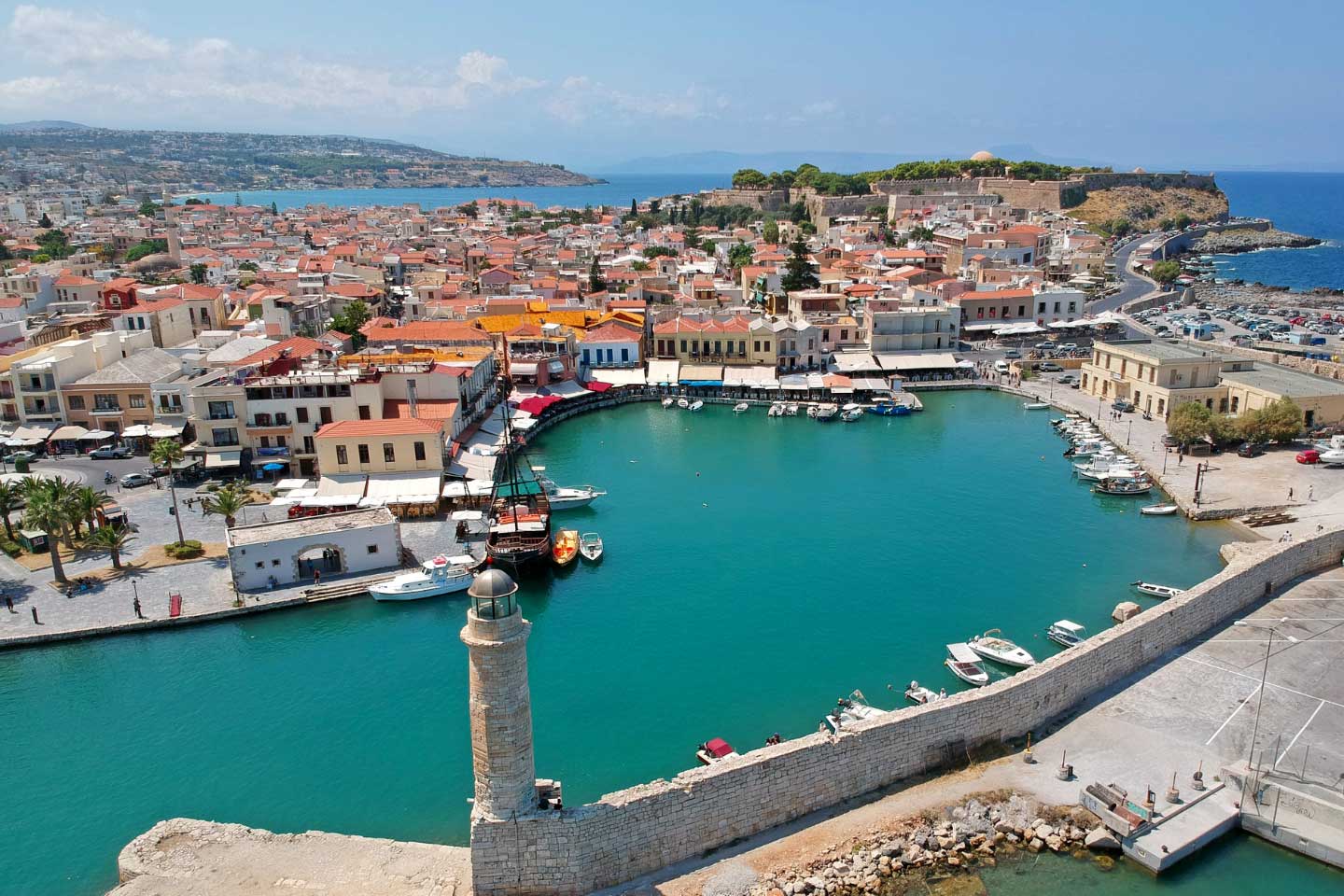
Rethymno City
Rethymno is a charming city located on the northern coast of Crete, known for its rich history, stunning architecture, and vibrant culture. Founded in the 4th century BC, Rethymno boasts a blend of Venetian, Ottoman, and Byzantine influences that can be seen in its well-preserved Old Town, characterized by narrow cobblestone streets, picturesque alleys, and historic buildings.
At the heart of the city lies the impressive Venetian harbor, lined with cafés and tavernas, where visitors can enjoy fresh seafood while taking in views of the old fortress, Fortezza. This 16th-century fortress offers panoramic vistas of the city and the sea, making it a popular spot for both history buffs and photographers.
Rethymno's Old Town is also home to several notable landmarks, including the Rimondi Fountain, the Great Gate, and the many churches and mosques that reflect its diverse cultural heritage. The city hosts various festivals and events throughout the year, showcasing Cretan music, dance, and cuisine, providing visitors with a taste of local traditions.
The nearby sandy beaches, such as Rethymno Beach, are perfect for sunbathing and water sports, making the city an ideal destination for relaxation and outdoor activities. With its rich history, vibrant atmosphere, and stunning coastal scenery, Rethymno offers a unique blend of experiences for anyone exploring Crete.

